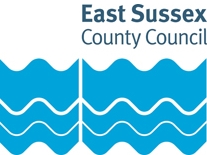While many of us are keen to enjoy the sunny weather while it’s here, it’s worth bearing in mind that high temperatures can also come with a degree of danger.
Getting outside has many health and wellbeing benefits, but when the temperature gets very hot you should know how to prevent heat exhaustion and heat stroke. This is especially true for children, older people and people with long-term health conditions (such as diabetes or heart problems).
Prevention is a good way to avoid the risks; by signing up to the free HeatAlerts service you can receive a text, voicemail or email when a heatwave is due so you can plan ahead. The service runs annually from June to September.
To protect yourself from heat exhaustion or heatstroke:
- Drink more cold drinks, especially if you’re active or exercising
- Wear light-coloured, loose clothing
- Avoid the sun between 11am and 3pm
- Avoid excess alcohol
- Avoid extreme exercise
The symptoms of heat exhaustion are often the same in adults and children, although children may become irritable too. Symptoms include:
- Tiredness
- Dizziness
- Headache
- Feeling sick or being sick
- Excessive sweating and skin becoming pale and clammy or getting a heat rash
- Cramps in the arms, legs and stomach
- Fast breathing or heartbeat
- A high temperature
- Being very thirsty
- Weakness
If someone is showing signs of heat exhaustion, they need to be cooled down and given fluids. To treat heat exhaustion follow these four steps:
- Move the person to a cool place.
- Remove all unnecessary clothing like a jacket or socks.
- Get the person to drink a sports or rehydration drink, or cool water.
- Cool the person’s skin – spray or sponge them with cool water and fan them. Cold packs, wrapped in a cloth and put under the armpits or on the neck are good too.
Stay with the person until they’re better; they should start to cool down and feel better within 30 minutes.
If you or someone else has symptoms of heat exhaustion that you’re struggling to treat, or you need advice about, you can call 111 or get help from 111 online.
Recognising heat stroke
Heat exhaustion does not usually need emergency medical help if you can cool down within 30 minutes. However, if the person is not feeling better after 30 minutes of resting in a cool place, being cooled and drinking fluids, you might need to call 999 to get emergency treatment for heatstroke.
Symptoms of heatstroke include:
- Still unwell after 30 minutes
- A very high temperature
- Hot skin that’s not sweating and might look red
- A fast heartbeat
- Fast breathing or shortness of breath
- Confusion and lack of coordination
- A seizure or fit
- Loss of consciousness
If someone is showing these symptoms and has lost consciousness put the person in the recovery position while you’re waiting for medical help.

